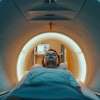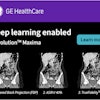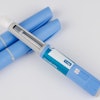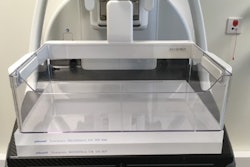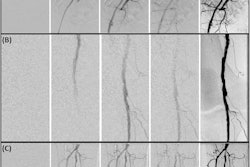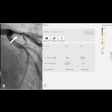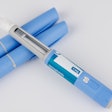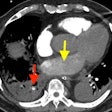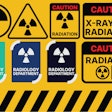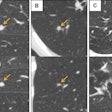Different methods of assessing image quality in CT scans are suited for different kinds of tasks, according to Dutch authors.
In an article published on 10 July in Insights into Imaging, a group led by Eva J.I. Hoeijmakers, PhD, from the Department of Radiology and Nuclear Medicine, Maastricht University Medical Centre, reviewed various techniques for assessing image quality (IQ) and created a decision tree based on their analysis as a guide for method selection.
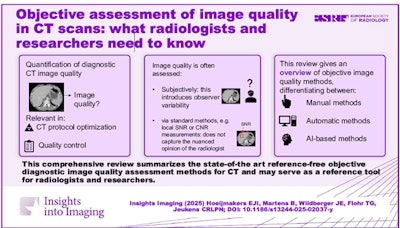 All figures courtesy of Hoeijmakers et al and Insights into Imaging.
All figures courtesy of Hoeijmakers et al and Insights into Imaging.
IQ can be assessed either subjectively or objectively, with subjective approaches such as radiologist assessment using the Likert scale still being considered the gold standard. This is despite drawbacks such as observer variability and the tendency to avoid extreme ratings, they explained.
Objective approaches for QI assessment that have become standard, such as region of interest (ROI)-based noise measurements, contrast-to-noise ratio (CNR), and signal-to-noise ratio (SNR) calculations, mitigate the shortcomings of subjective methods, but they also lack the nuanced perceptions of subjective assessments by radiologists, the authors added.
Ideally, objective methods should be consistent with human observers while allowing automated IQ assessment. A fully automated IQ assessment method would offer immediate feedback following a CT scan if IQ was below a set threshold, the authors added, and could support continuous and consistent quality control for CT scanners. However, assessing which methods work best may not be a straightforward matter.
"While there are well-defined metrics for straightforward quantification of radiation dose, accurate quantification of diagnostic IQ is far more complex and requires a comprehensive understanding of how various IQ metrics (e.g., noise, spatial resolution, contrast) influence IQ and how to evaluate them effectively," they wrote.
The authors performed a literature search through PubMed and Web of Science to identify all English-language papers published in peer-reviewed literature until June 2024 that "[e]xplicitly discussed, proposed or applied objective quantitative reference-free methods for IQ assessment of CT, including AI-based methods" and were applied to, or were applicable to, clinical data. In total, the primary literature search yielded 2,254 studies; 78 studies were selected for full-text review, of which 35 studies were included in the systematic review.
The methods used were first divided into groups based on the aspect of IQ they addressed: noise, contrast, spatial resolution, and "other factors." They were then further divided by type: manual (those requiring human involvement for evaluation, e.g., manual ROI placement); automatic (fully deterministic algorithms operating without human input once configured); and AI-based (automated) methods that use machine or deep learning to detect patterns from data.
The researchers then extracted the following information from each study: the IQ assessment methodology, the body region for which the method is applicable, the key principle, whether the method is ROI-based, key advantages and disadvantages of the method, and if and how the method was validated. They then constructed a decision tree to aid in selecting the relevant method for the corresponding research goal.
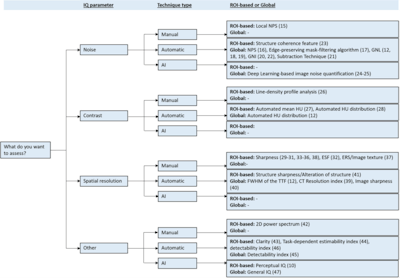 Decision tree generated through the authors' analysis, providing a structured overview of advanced image quality (IQ) assessment techniques for CT.
Decision tree generated through the authors' analysis, providing a structured overview of advanced image quality (IQ) assessment techniques for CT.
The current transition in IQ assessment toward more automated and AI-powered methods offers greater opportunities for large-scale, real-time, consistent, and reproducible results, the authors noted. But manual, ROI-based approaches, while time-consuming, less reproducible, and variable, are still considered valuable for localized and task-specific assessments.
They suggested that AI-based methods can simulate subjective IQ assessment when trained on subjective datasets, while providing greater consistency. The AI-based approaches require large, diverse datasets, are not widely generalizable across different regions of the body and exam protocols, and may be difficult to validate due to the lack of a universal IQ gold standard, the authors cautioned. Nevertheless, "CT IQ assessment should move toward a fully objective approach to overcome human variability," they concluded.
Read the full Insights into Imaging article here.

